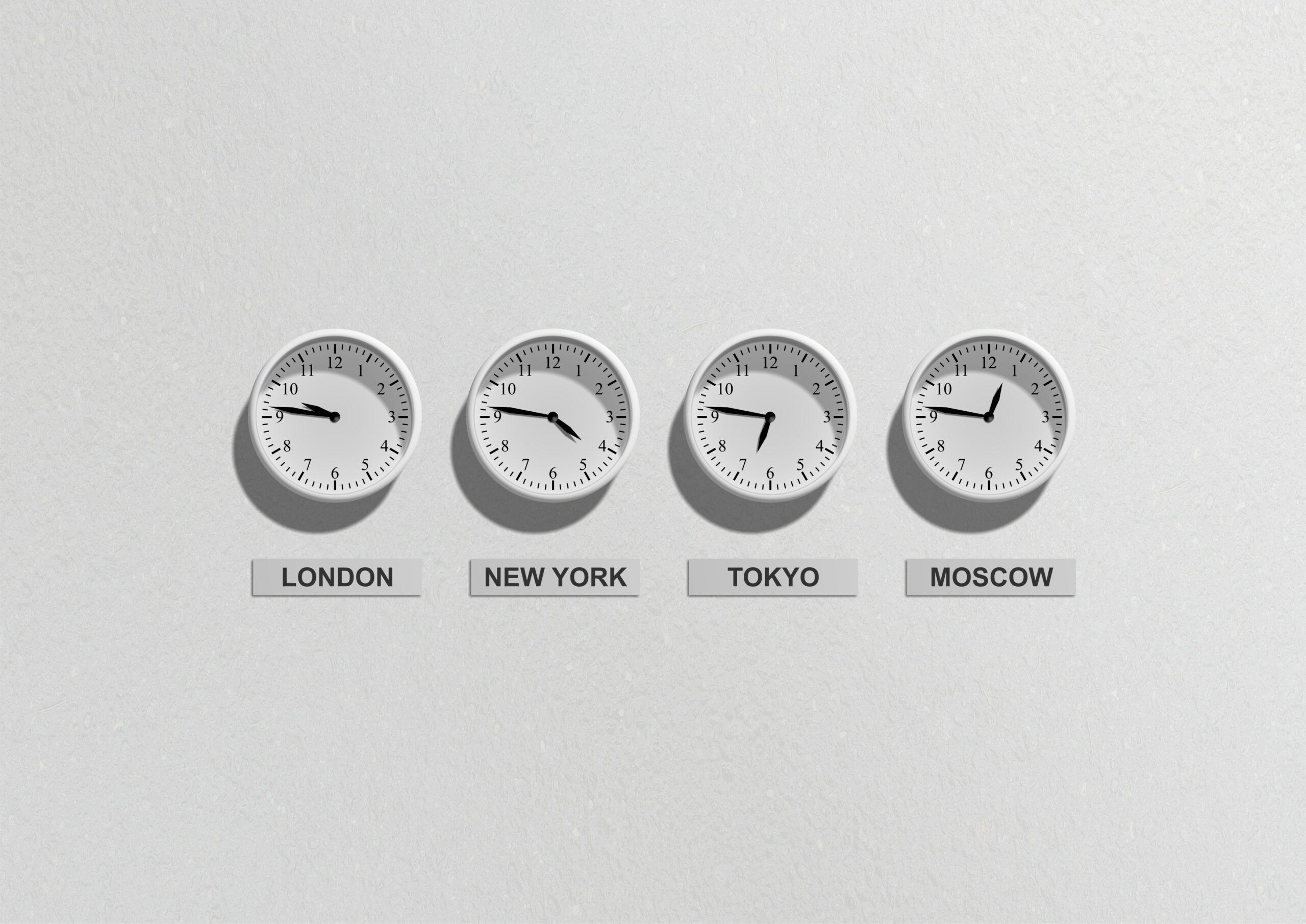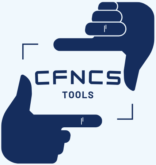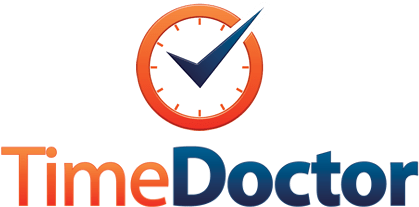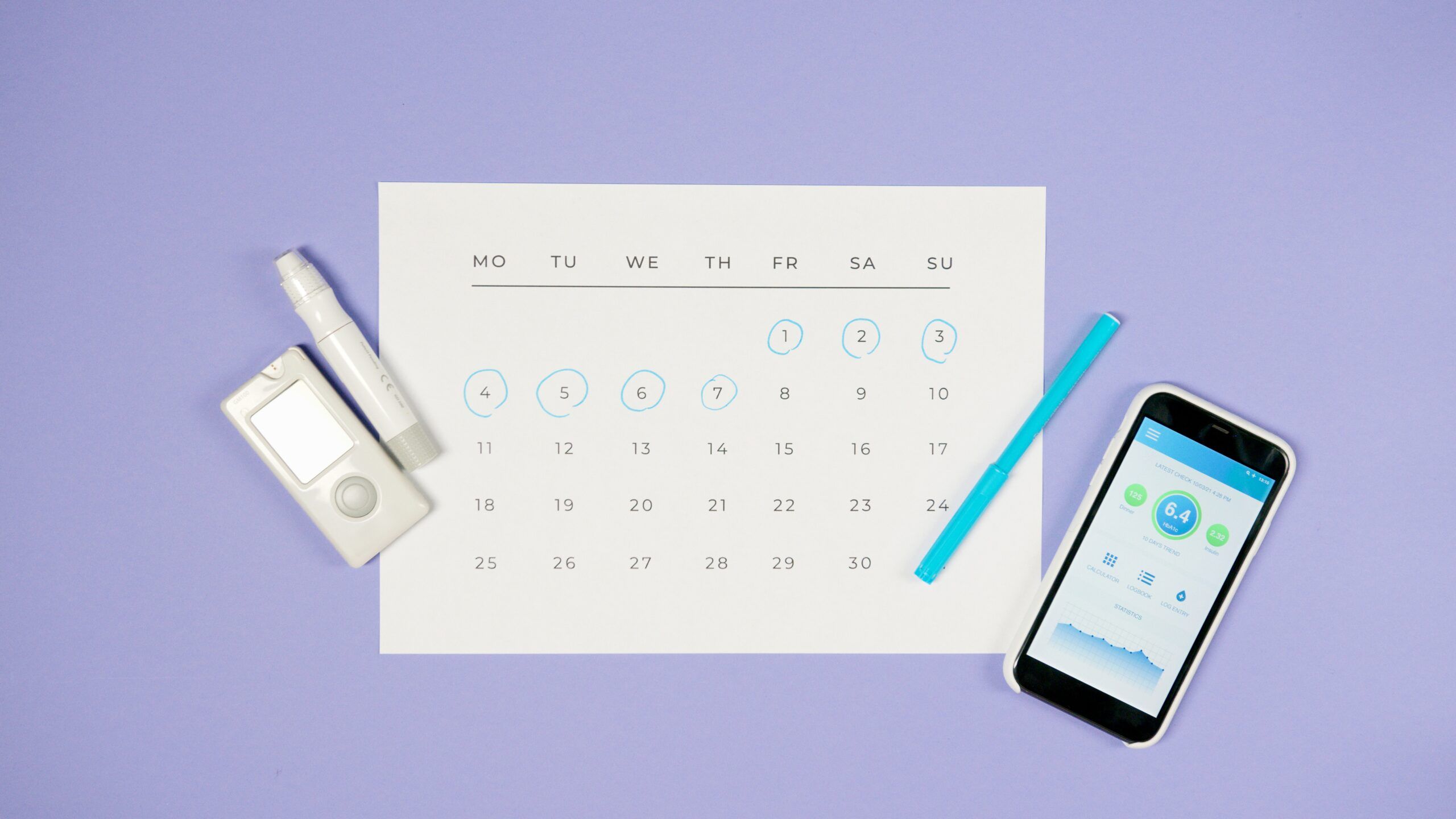When searching for the best time-tracking software, it is important to not only consider what it offers and how much it costs but also look at the features that set it apart from others. All time trackers may not be created equal. It’s crucial to compare and decide which of the competitors is worth a shot.
We must not forget to consider our personal feelings. The final decision you make will affect your personal feelings and impact the productivity of your team.
Time Doctor is one of the most popular apps in today’s productivity market. It has both teams and single users in a stupor for its task- and time-monitoring capabilities. But has it caught us the same way? Read this comprehensive review to find out.
Frank Rivera has posted a video review of Time Doctor on his YouTube channel Franklin Rivera. For those who like a more visual experience, You can still read our article to get a complete overview of Time Doctor.
A Closer Look at Time Doctor What Is Z Table Used For
Time Doctor is a time tracking and project-monitoring tool that’s best suited to small and large businesses, freelancers, remote teams, and freelance workers. Its lineup of tools and features aims to help teammates and individuals improve their productivity by an average of 22%.
Launched in 2012, around a decade earlier already, Time Doctor has slowly gained a large following, becoming a popular time management tool among companies everywhere, whether they’re established or just starting in the industry. The client portal feature has made it a favorite among freelancers, who frequently work for multiple clients.
Time Doctor has amassed a user base of over 250,000 businesses throughout its history. Among those who’ve used the service for time and employee management matters include Apple, Ericsson, Better Business Bureau (BBB), Verizon, Boost Media, and Thrive Market.
Some of the features Time Doctor has been renowned for are its robust time and activity tracking functions and advanced capabilities, such as setting reminders for when to start and stop the timer. These features may be enough to help Time Doctor stand out from other time management apps. Still, the lack of cohesiveness in its general user usability stops it from doing so.
We believe Time Doctor can be a great addition to any team or individual looking to increase their productivity. Keep reading to know more about what else this one-of-a-kind platform has to offer and how well each of them works! What Is Z Table Used For

> > Click Here to Try Time Doctor Now < <
The pros
- Time Doctor is most well-known for its easy-to-use, time- and activity management tools and functions.
- It includes outstanding features like pinpoint-accurate reports, idle alerts and automatic reminders.
- The user-friendly and extensive client portal makes it easy for freelancers to interact with clients.
- It offers a smooth and sizable list of integrations with third-party platforms.
The Cons
- The platform’s confusing user interface makes navigation difficult for many users, particularly first-timers. What Is Z Table Used For
- Despite its potential, its mobile apps don’t provide the same flexibility as the desktop and web versions.
- It doesn’t offer smooth switching between the web-based client and desktop apps, especially if you’re both the administrator and the user.
- Only the web extension or desktop app can access the time tracking function.
Plans and Pricing
Let’s first discuss the plans and their cost. Time Doctor currently has three paid subscription tiers. Each tier offers a unique set of tools and features that get more expensive as they become more complex.
The pricing will also increase according to the number of users added to one team. Let’s check out the following three available plans in the Time Doctor platform.
- Basic – $70/user annually or $7/user monthly
The Basic tier of Time Doctor includes access to core platform features such as task and project management and time and activity tracking. It also allows unlimited screenshots. However, you can only use them if you download the desktop application or web extension. You can only store one month of data.
- Standard – $100/user annually or $10/user monthly
Standard plans allow you to access advanced features such as tracking your team’s apps and URLs, the payroll tool, reporting and 60 additional integrations with third-party applications. The Standard plan also has a new time limit for its customer support hotline, which is now limited to three days instead of 24 hours.
- Premium – $200/user annually or $20/user monthly What Is Z Table Used For
The Premium tier is the most complete yet out of the three. Those subscribed to it are given access to all of what Time Doctor has to offer – on top of the core tools, they can also explore the client portal, take video screen recordings, and receive VIP-style support.
Paying annually will get a complimentary charge for the first 2 months. Time Doctor doesn’t offer a free plan. However, each of the three plans offers a limited 14 day trial that allows you to try it out and decide if it is the right tool for you.

> > Click Here to Try Time Doctor Now < <
The User Interface
Time Doctor is a robust tool for managing time and activities. However, it’s well-known for its awkward and poorly designed user interface. In most cases, going through the platform can be such a hassle – it’s even much harder if you explore its dashboard and features for the first time.
For instance, many who’ve used Time Doctor have found issues accessing its range of functions. Many users have complained about the inability to centralize their data within the app, which would have saved them a lot of time. Users can access the time tracking feature via the web extension or desktop app. The website version only has project management, reporting, as well as other admin features. This is why switching between the portals is easier – it’s not possible to do this with other time management platforms.
Another obstacle Time Doctor users need help with is the general look and design. Save for the desktop app, and the website-based dashboard sure does lack a few key intuitive features which would have made for a more convenient user experience. It also needs the diversity of data graphs used for reporting – sure, and the bar graphs are great and all, but what about the circle graphs? Pie graphs, as well? Line graphs, perhaps?
It’s already clear that Time Doctor’s user interface and design don’t shine as brightly as its features – we’ll review that very shortly! However, despite their combined lackluster appeal, they’re not strong enough to fully soil the experience of tracking work activity, which the platform was designed for in the first place. Some users aren’t bothered by the UI problems, while others adjust to it quickly. What Is Z Table Used For
There’s still a glimmer of hope that the UI and UX issues in Time Doctor could be resolved and improved in the future. For now, however, new users will need to learn the platform’s inner workings.
Key Features Included in Time Doctor
Let’s now dive into the tools and features you might want to explore when you log in to Time Doctor.
Project and Data Management
Time Doctor’s project management capabilities allow individuals and administrators to create tasks and group them in a matter of seconds. Admins may also utilize this feature to assign their employees tasks to offload and maximize their teams’ productivity. Although you can set up standalone tasks, you may group them if you’d like into larger projects to keep things tidy and organized – a great idea for big companies whose stability relies on numerous departments beneath them.
Time Doctor understands that a clean workboard can easily get things done. Administrators can limit access to certain tasks and projects by limiting their visibility to a particular employee or group of employees in the organization. Do you want to check out who’s working on the task or project now? You may monitor their progress through the dashboard by checking how long they’ve been working, among other things.
Unlike the few other time management platforms out there, Time Doctor allows users to create permanent trackable tasks that can be easily adjusted, edited, or even deleted without having to worry about adding one day by day. Those who work around repetitive tasks will no longer need to face this burden every time – all they need to do is change them to permanent status! What Is Z Table Used For
> > Click Here to Try Time Doctor Now < <
Time Tracking and Alerts
Time Doctor’s time-tracking software can only be accessed via its Chrome web extension or desktop application. Despite not being available in the web dashboard, its capabilities are surprisingly well-versed enough to make it stand independently. It’s easy to use – simply add the task to which you are assigned and then click the start button to track your progress. It’s simple as that!
As the timer plays out throughout your task, all your actions and activity will be recorded in the background. They will then be logged and saved to the web dashboard, where admins may use this to check on their employees’ progress on the go. You may do it the same way if you are working alone.
Time Doctor’s time tracking tool is unique in that it allows users to set up their own setup until they are happy enough to work. The software also has a reminders function that reminds you when it is time to start and stop work. Another is the “idle time” function, in which users can convert the duration in which they haven’t been working and reassign it to work hours.
If no sign of user activity is detected after a few moments, the timer will automatically bring it to a stop. If you spot something similar and have gone to attend other things, you can manually click the play button in order to restart tracking. You can also pause the timer if you need to take a break from work. If you need space to take a proper break and don’t want to resume or stop the timer on your own, Time Doctor lets you incorporate time intervals between your daily tasks.
Time Doctor may be able to track your work hours and progress online, but did you know that it could do the same offline, too? Like some time monitoring apps such as Hubstaff, which have this function, Time Doctor can record your activity and the hours you spend on your task even without the presence of an internet connection. What Is Z Table Used For
Website and App Usage Monitoring
Time Doctor monitors more than just hours spent on a desktop. It also tracks websites visited and keystrokes made while you work. If the platform sees that the mouse cursor or keyboard hasn’t moved for longer, it will pause instantly and stay that way until you do something with it.
Often, it’s hard to tell whether someone seems productive until you find out what they’ve been doing. If they’ve been focusing on their tasks, that’s a sigh of relief. It’s not the same story if they have been procrastinating and going to other platforms to distract from what they should be doing. Time Doctor lets you check out which websites and applications your colleagues have used during work hours, as well as how long they’ve been looking at them.
Among Time Doctor’s set of robust monitoring capabilities, there is a feature in which admins can easily spot if their employees have either been wasting time or attending to a task by the website URL or application name and the status given to it. This feature is available to managers and administrators to adjust the platform’s productivity rating to any one of the three ranks.
- Productive, if it serves a team/project’s purpose as a key driver to its tasks.
- Unproductive, if it otherwise serves zero purposes and, therefore, a time-waster
- Neutral, if it’s neither considered productive nor unproductive.
These statuses can be assigned to any app or website and can be set to be restricted to a single user, group/team or company. It is extremely convenient for those who work in specific jobs, such as content writing, to be able to monitor website activity and set productivity statuses per user. Time Doctor, unlike other time tracking software, may have been fortunate to include this important function. What Is Z Table Used For
Screen Recordings and Activity Screenshots
We told you earlier about Time Doctor’s ability to track your activity and time in the background, while posting it to the web dashboard for administrators to view. Its built-in screenshot capabilities are there for this reason.
Administrators can specify a time period for screen capture across their project/team. It could be set to 10 minutes, 30 or even 30 minutes. If they please, they may also opt to select any of their teammates who should be allowed access to this feature.
As a measure of user productivity, each image includes additional information about the mouse cursor activity and keystroke activity. Premium subscribers have unlimited access to screenshots. Those who subscribe to Time Doctor’s Standard and Basic plans have unlimited access to screen shots. However, premium users can record video screens. The platform captures three minutes of actual work activity, instead of just taking photos of the monitor.
Rarely, a team member or project manager may be exposed to privacy breaches due to serious circumstances. To protect their safety, they might be permitted to delete screen recordings or screenshots within the Time Doctor platform. However, this will likely result in the deduction of work hours listed on the day of recording.
> > Click Here to Try Time Doctor Now < <
Productivity Reporting & Analysis
Time Doctor lets users view, edit and save pre-built reports. Each contains data and insights collected by the software during their tracked work hours, all presented in the form of decent visuals and summaries. Users can request reports to determine which time management and productivity practices are working well and which ones need to be improved.
You have so much to journey through with Time Doctor’s report collection. The Web and App Usage report lets you see how much time you have spent on websites and apps that are considered productive. The Poor Time Use report shows how long you have sat on sites that have been flagged inappropriate for work. However, issues have arisen, especially from multi-screen work set-ups where one could jam to their favorite playlist on one screen while they get to their task on another. Poor Time Use also includes being able to set pop-up windows on off-limits websites, so whenever someone decides to go to YouTube, for example, they’ll be instantly met with a reminder if they want to continue or go back to focus on their assigned task.
Other types of reports include the Timeline report, which displays all your tracked hours in chronological order, primarily divided into the colors yellow for manual time recording and green for automatic; the Project and Tasks report, where hours spent on assigned tasks and/or projects are broken down in full detail; and the Activity Summary in which your total work hours and the full percentages derived from a combination of all other reports are laid out for you and your admin to see. What Is Z Table Used For
While Time Doctor’s accurate reporting tools may be impressive and all, some of its users have historically not liked experiencing certain issues while generating them. Firstly, the formatting of most reports is generally clunky, further affecting how they’re exported. Second, XSL and CSV are the only two options Time Doctor has made available and nothing else – some may be simply okay with that, but others won’t like this lack of export file diversity as much.
Client Access and White-labeling
If there’s one thing about Time Doctor that dedicated freelancers or solopreneurs can’t get enough of, it’s the ability to share the progress of their tasks with their clients, even if they are not exactly their teammates or don’t share a Time Doctor account.
You may find it helpful to know that the Client Portal feature of the platform allows you to accept commissions from many clients.
Simply send the link to the portal directly to your clients. Once they have access to it, they can see how long you’ve been working, how many tasks you completed, and even the archive of screenshots and reports. You have complete control over what your clients see through the Client Portal, which results in smooth, tasteful interactions.
Time Doctor’s white labeling feature allows you to integrate its tools with your branding if you are the owner or manager of a successful business.
Payroll
Planning to pay your employees based on how much they’ve dedicated their time to their respective tasks? You can do that within the Time Doctor platform through its built-in payroll feature. You can turn on payroll deep within the settings of your web dashboard and your team will be automatically billed. You may pay your teammates based on tracked hours or on a fixed-rate basis.
Time Doctor’s payroll software supports all currencies. You can ask employees to send their salaries through PayPal, Payoneer or TransferWise. For batch payments, you can export your payroll information to a CSV file if you work for a larger company. Multiple payments are sent at once.
Integration with Third-Party Services
Time Doctor currently houses a decent yet heavy range of integrations with various third-party platforms, focusing on business, work, and productivity. With an approximate estimate of over 60 integrations, Time Doctor makes it easy for you to manage your team’s combined work in one interconnected ecosystem.
Such includes connections with project management platforms like Asana and Trello, payment services like PayPal, work messaging apps like Slack, and CRM platforms like Salesforce. A public API tool is also available to integrate with other apps. This can be used if you know something about coding or you and your teammate are good at it.
The Time Doctor Mobile App
Time Doctor’s desktop software is available for download on Windows, Mac OS, and Linux OS computers. The latest web extension, however, is only available on Google Chrome. The time-tracking software offers unlimited access to its users through their smartphones. Time Doctor currently offers two mobile apps versions. You can download them both on the Apple App Store or Google Play.
No matter how you look, you may be able to track your work hours and progress even if you’re out of the office. On one side, the classic version of the app lets you overview the tasks within a project that need to be done, as well as track where your teammates are through GPS – both on top of the basic time-tracking tools and limited dashboard settings.
Time Doctor 2 is the latest version. It has almost the exact same functionality as the older version. The only differences that set the two apart are that 1) TD2 is only compatible with Android devices, and 2) you won’t get to explore other features aside from time tracking – a noteworthy downgrade from TD Classic.

> > Click Here to Try Time Doctor Now < <
How Safe and Secure is Time Doctor?
At this point, you’re questioning whether or not Time Doctor is worth trusting as a time management service. You may also wonder if its surveillance tools could keep track of your actions, even as you pause your timer momentarily to catch a quick break. Although the aspect of a 1984-esque work scenario may seem intimidating, we’re glad to tell you that your activities as the timer stops will not be tracked and saved to Time Doctor’s cloud-based database. You’re safe because it’s not spyware-like.
We’d like to reiterate that your work activity may be tracked through screenshots and recordings, and we’d also like to add that there is a webcam shot feature that project managers may use to see their teammates right in front of their eyes…
Okay, maybe the thought of that may be quite concerning, especially for some who are protective of their privacy, but don’t worry – not all admins want to use this, so there’s a good reason why the webcam shots and screengrabs are optional and can be enabled or disabled depending on how the admin user feels.
Time Doctor assures that your likeness and activity will not be forced-shared in vain. The same sentiment can also be applied to payment information entered into the platform by yourself or your colleagues. These will then be automatically deleted after a while for privacy reasons.
Time Doctor further takes up drastic security measures to ensure that every user’s account isn’t easily breached. This includes strong password policies and 2FA protection. All data stored within the platform is protected by strong SSL encryption with maximum security. Plus, since Time Doctor is cloud-based, expect all your stored data to be backed up regularly. You may be able to have your data restored quickly in the event of an internet or power outage. This will ensure that you don’t lose any progress.
The bottom line: Do you use Time Doctor?
Time Doctor provides a steady user base of professional teams and freelancers with the benefits of a simple, straightforward task management space and the charms of an advanced-level time tracker, creating a harmonious balance between the two.
While its line-up of dynamic features has admittedly left us in awe, the experience would have been significantly better if it weren’t for the disorienting UI and UX, lack of functionality and cohesiveness in the mobile apps, and, to an extent, undersupply of report graphics options. These problems may have hindered other users as well as us from enjoying the experience to its fullest. Still, others don’t mind anyway because it works exceptionally in what it was originally designed to do – track time.
Overall, we ultimately believe that Time Doctor has what it takes to stand on its feet, despite not offering the same easy accessibility as other apps do. Besides, every time management platform shines uniquely, right?
FAQ What Is Z Table Used For
How do I contact Time Doctor’s customer support team?
You can contact Time Doctor’s customer support hotline via e-mail, or live chat. There is currently no phone support option provided. However, if you have an important matter and the best and only thing you think to solve this is through talking over the phone, you may leave behind your contact details and preferred call time through any of the available outlets. You will be notified by the hotline and can reach them any time.
You won’t find any tutorials or tips for Time Doctor anywhere else.
Though there are YouTube videos and how-to articles from independent creators that have already discussed it in full detail, Time Doctor does offer its users an alternative through its dedicated help center, where most of the information included comes from the team behind the platform themselves.
Do I need to add credit card details to apply for a free trial to any of Time Doctor’s paid plans?
No, you won’t need to use your credit card to sign up for a limited 14-day trial. You can only bring it up once you finish the period and wish to commit to purchasing a Time Doctor subscription if you like.
Is Time Doctor HIPAA-compliant?
Yes. Time Doctor adheres to the standards and rules of the US Health Insurance Portability and Accountability Act (HIPAA). Even though it can technically be used for a vast range of niches, industries, and professions, the platform can be a solid addition to healthcare teams.




